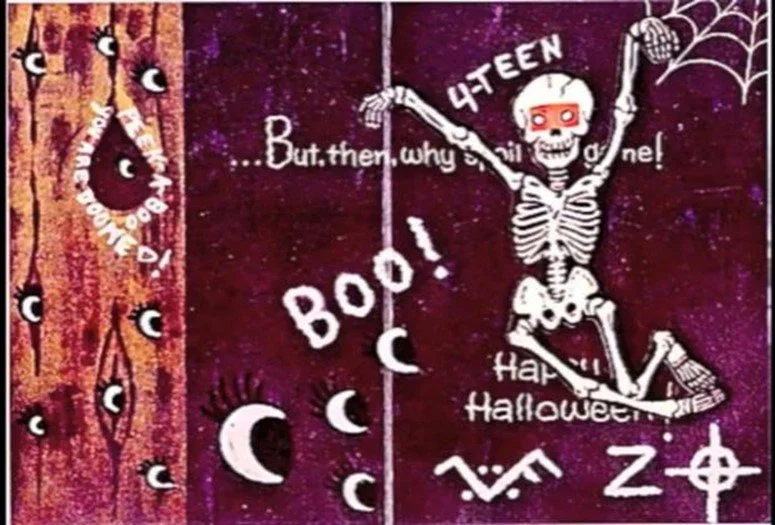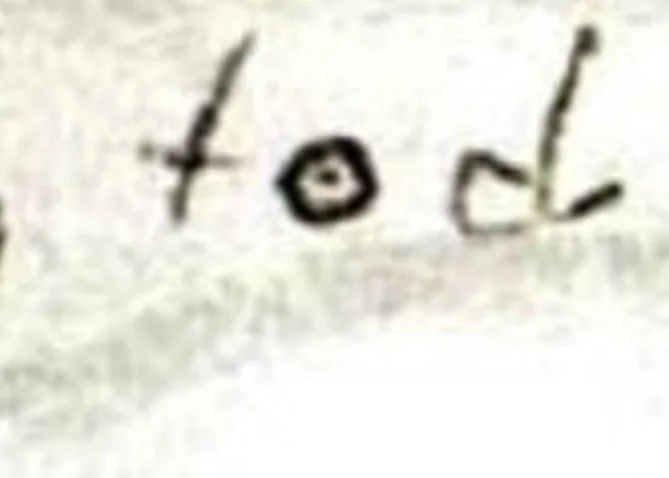Visual Puns
Blog Post #5
“I AM NOT SICK [sic].”
The “[sic]” beside “SICK” denotes writing errors in the above excerpt from “THE CONFESSION” letter—namely, a series of miscapitalizations. Interestingly, “SICK [sic]” works as a visual pun for six or twenty-six because the homophones sick and sic make the plural “sics” or “two sics.” But is a SICK-sic visual pun intended?
Every alphabetical letter in THE CONFESSION is capitalized—therefore, any excerpt from it could be followed by [sic]. Or in more superstitious words—because of THE CONFESSION’s all-caps style, [sic] almost magically appears at the end of its every sentence.
If these ghostly appearances of [sic] are intended, then only an imaginative person—likely someone who reads and/or writes a lot—could have authored THE CONFESSION. Of course, a poet who works at a library could fall neatly into that description.
These images show the first two pages of a letter written by the Zodiac Killer. As the final word in the first page, “Over” works as a sinister visual pun because 1) it is independent of other statements on either page, 2) it contradicts the very existence of a second page, and 3) Over’s final letters E and R are cut incomplete by the end of the paper; the statement seems to be “[This is] not over.” And being in a document mailed out before the events took place, the “[This is] not over” visual pun seems to foreshadow both the Lake Berryessa attack and the murder of Paul Stine.
If such subtle foreshadowing was intended, then only a literary and/or artistic person could have contrived it. Of course, a poet who works at a library could fall neatly into that description.
“THERE WIll BE MoRE [sic]” from the Bates Letters is a plain version of the “[This is] not over” visual pun. So is “SHE WILL NOT BE THE LAST [sic]” from THE CONFESSION.
Above is a marked-up image of the Zodiac Killer’s “Happy Christmass [sic]” Letter. It festively showcases a double-negative visual pun: “complet” is missing its final letter—therefore, it is a visual pun for incomplete; however, when crossed out as “complet,” incomplete becomes “not incomplete” (or simply “complete”). And so, it is essentially the opposite of the “[This is] not over” visual pun.
Both luckily and eerily, there are no further known Zodiac Killer attacks after the Happy Christmass Letter was postmarked. And so—according to the dates they were mailed out on, the “[This is] not over” and “not incomplete” visual puns each seem to accurately describe an aspect of the future.
In terms of identifying the Zodiac Killer by name, the “not incomplete” visual pun is crucial; it thematically foreshadows the Strikethrough Skeleton = Sullivan solution described in Blog Post #3 because they both involve Double-Negative Strikethroughs. In other words, the “not incomplete” visual pun strongly indicates that the Strikethrough Skeleton = Sullivan solution is correct.
And in the process, it strongly indicates that the Strikethrough Skeleton is indeed a double-negative visual pun.
Appearing on the same side of the Halloween Card as the Strikethrough Skeleton, the Nine Eyes on Wood are another visual pun; as also described in Blog Post #3, they represent how I is simultaneously the ninth letter of the alphabet and the ninth letter in Ross Sullivan—because eye the sensory organ is a homophone for I the letter.
Now that we have identified a significant sample of visual puns throughout the Zodiac Killer documents, let’s examine the SICK-sic visual pun for possible meanings. . . . Firstly, does it mean six or twenty-six? Secondly and perhaps more importantly, was it created by the Zodiac Killer?
Zodiac has six letters—and it starts with Z, the twenty-sixth letter of the alphabet; seemingly, six or twenty-six could suggest that the SICK-sic visual pun was created by the Zodiac Killer.
“I AM NOT SICK. I AM INSANE [sic].”
An extended form of the earlier excerpt from THE CONFESSION, the side-by-side statements above contradict one another (or at least they seem to) in a memorable way. . . . Why is the writing so peculiar?
Like Zodiac, “INSANE” has six letters. It also has an alphabet-number code value of sixty-two (that is, the numbers in I-9, N-14, S-19, A-1, another N-14, and E-5 [from the letters in INSANE] add up to sixty-two [9 + 14 + 19 + 1 + 14 + 5 = 62]). So does Mercer (13 + 5 + 18 + 3 + 5 + 18 = 62), which is Ross Sullivan’s first of two middle names. In other words, I AM INSANE = I AM MERCER.
Moreover, INSANE begins with the letter I, which appears twenty-six times throughout the Desktop Poem. And because the twenty-sixth letter of the alphabet is Z as in Zodiac, the Desktop Poem’s twenty-six I’s (as counted in the image below) symbolize I = Z or “I am the Zodiac.”
The character after “if red” is nebulous; it’s either an I or a slash [/]. As Blog Post #2 aka The Desktop Poem explains, the poem contains either 26 Letter I’s or twenty-five letter I’s and one eye image (called the O/Eye Image) for a total of 26 Homophones. Either way, the result could be code for I = Z or “I am the Zodiac” because both I the letter and eye the sensory organ are homophones for I the pronoun.
As its “dot” seems to be the period in the line above it, the mark after “if red” could be meant as both an [i] and a [/] at the same time—an i/slash (kind of a tongue twister, I know).
Have you ever noticed that an italicized capital I [I] and a plain slash [/] are virtually indistinguishable from each other in certain fonts? Biome is one such font.
The i/slash appears directly under the period in the line above it; together, they look exactly like a lowercase I. In the same vein, it looks completely different from the emboldened slash [/] in the poem’s title line (see image below); the i/slash is much smaller, much thinner, much less slanted—and it’s thicker at the bottom, while the emboldened slash [/] is thicker in the middle. Moreover, the i/slash doesn’t have a word to its right—in other words, it can’t actually serve the function of a slash.
“Sick of living/unwilling to die” makes sense. But
“if red /
clean”
does not make sense. . . . Ultimately, the i/slash is a sinister play on words, letters, and punctuation because it raises the Desktop Poem’s number of letter I’s to a value of Z as in Zodiac—and the Zodiac Killer slashed people “by knife.” In other words, the i/slash is another visual pun created by the Zodiac Killer.
And it’s exceedingly meta; involving letters and punctuation, it’s wordplay that extends the meaning of wordplay—by talking only to the eye.
Also, the i/slash has a sibling: the O/Eye Image. They live together in a visual poem. . . . According to a well-reasoned argument called “The Taft Theory” (link: https://www.mk-zodiac.com/TheOriginofthePoemTheTaftTheory.html), the subject matter of the Desktop Poem seems to be the attempted knife murder of a young woman by the last name of Atwood. As a punny result, the Desktop Poem’s wooden surface seems to represent Atwood. In other words, Poem On Wood = Victim Atwood.
It is as if the poem’s wooden surface is “spurting, dripping, spilling . . . all over” itself.













